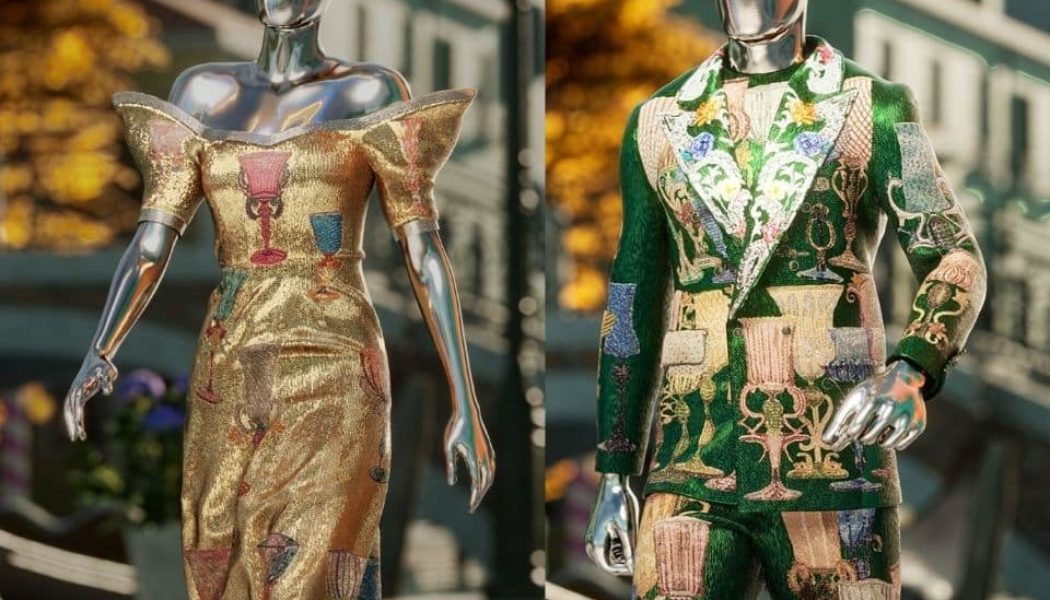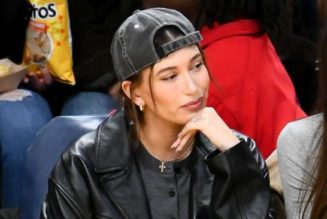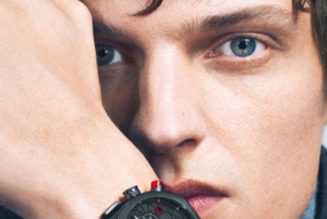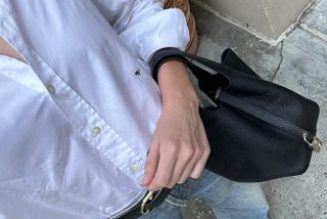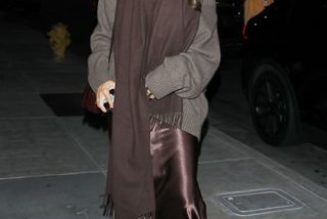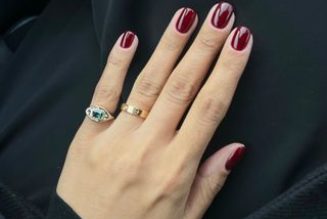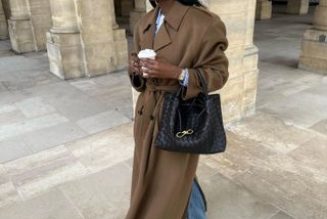Nowadays, fashion NFT brands are more popular than ever. Metaverses like Decentraland boast over 8,000 unique visitors daily, most ready to play, collect, and have fun. What does this mean?
It means digital avatars matter more than ever. People are now willing to spend big bucks on NFT apparel they can wear in the Metaverse (known as “wearables”). Much like physical apparel, virtual clothes and accessories help you make a statement or show your status.
This created the perfect occasion for luxury fashion brands to step in – and that’s exactly what we’ll explore in this post.
From Louis Vuitton and Burberry to Web3-only brands such as RTFKT and The Fabricant, here’s an insight into the top luxury fashion companies on the NFT scene. Before we get into that, though, let’s answer a key question:
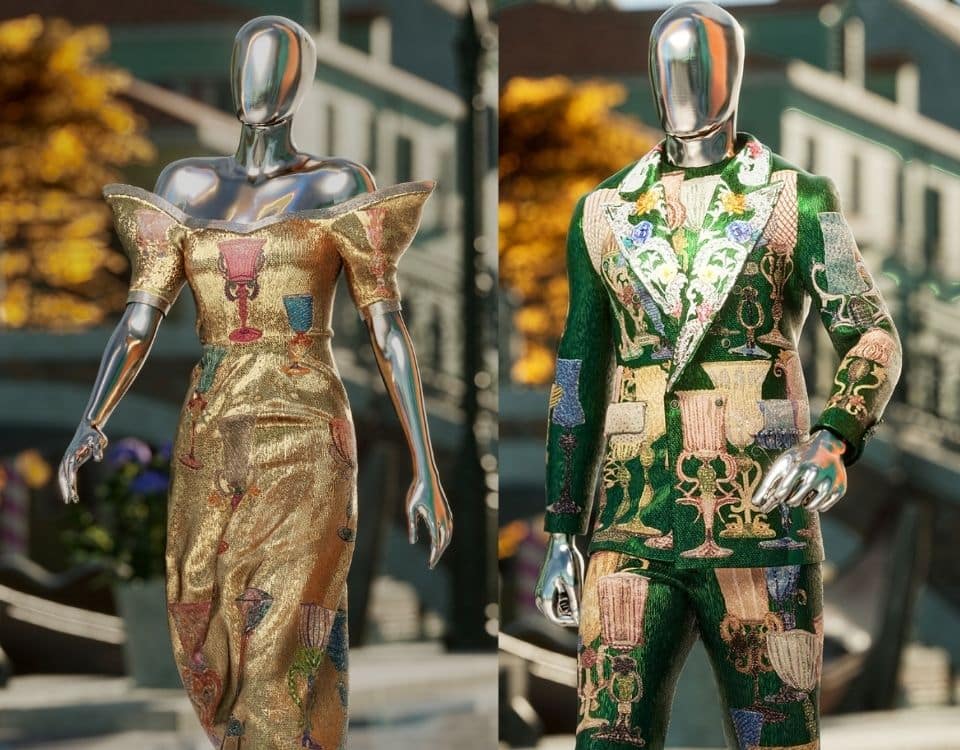
How Do Luxury Brands Use NFTs?
In 2023, metaverse fashion is just as big of a deal as the real-life one. Millions of users want to show off their personalities, hobbies, or even financial gains – and what better way than wearing them in the Metaverse? But, just like real-life fashion, the Web3 world needed somebody to set the trend too.
Luxury fashion brands saw this opportunity after the 2021 NFT boom and instantly hopped in. Now, events such as Decentraland’s Metaverse Fashion Week host impressive runways with seasonal collections. Luxury brands improve their reputation and popularity, boost their sales, and
Here are two other essential reasons why so many luxury brands joined the NFT market:
Metaverse Stores
As you’ll soon discover in this article, many luxury NFT brands opened their own virtual store in the Metaverse. Besides exposure, digital stores often increase brand NFT sales.
For example, Gucci’s Gucci Vault store in The Sandbox showcases the company’s rarest vintage Gucci apparel. It’s an accessible way for visitors to know the brand, its value, and its history; most users could never access this experience in real life.
Phygital NFTs
Many luxury fashion brands launched digital NFT duplicates of their latest physical apparel for a good reason. Dolce & Gabbana’s Collezione Genesi (more on that below) is a top example of NFTs linked to physical items. This NFT collection was auctioned off for a whopping $5.7 million, proving that physical NFTs have great potential.
With so many Metaverse perks, it’s no wonder why tens of iconic fashion brands IRL have already established their Web3 presence. Let’s check them out!
Which Luxury Fashion Brands Are Using NFTs?
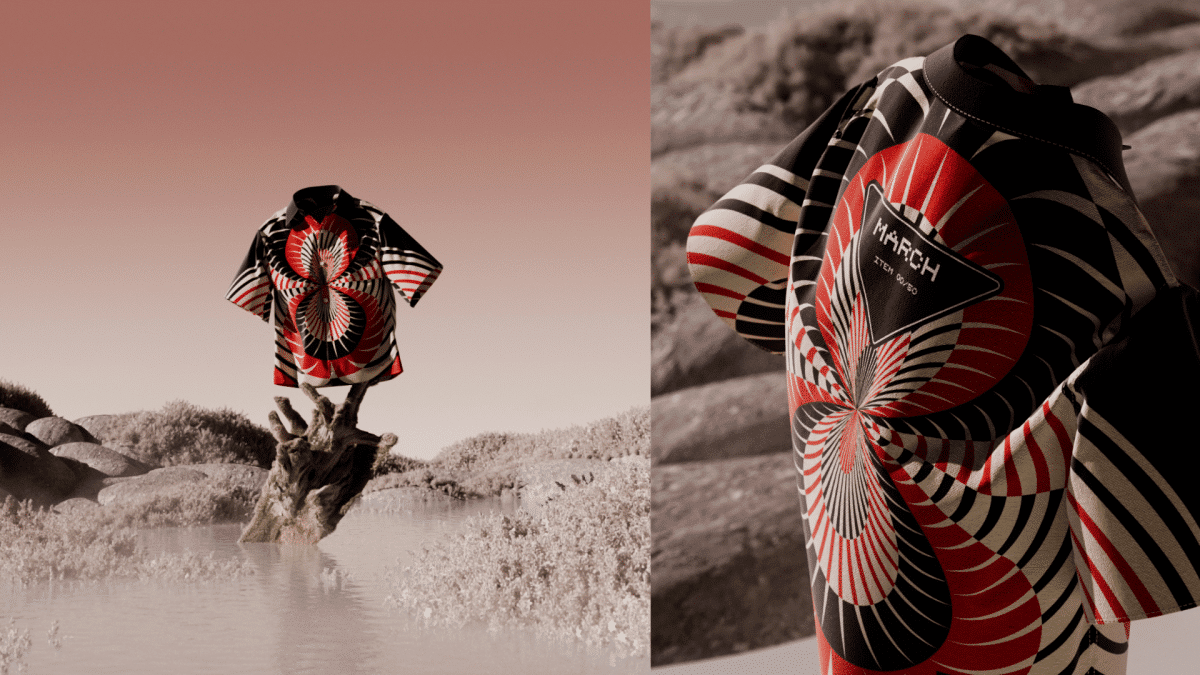
Prada
If a luxury fashion brand loves phygital NFTs, it’s definitely Prada. The iconic company launched its debut NFT collection in September 2022; users had to buy their physical merch to claim a digital asset. So far, it seems like Prada will continue to follow the same NFT minting system.
Throughout 2022, Prada went on to launch several Timecapsule NFTs. In order to claim a Prada collectible, you must keep an eye out for their upcoming Timecapsule physical apparel releases. At the time of writing, the floor price for this collection is 0.41 ETH.,
Yves Saint Laurent
L’Oréal Group’s most luxurious fashion brand, Yves Saint Laurent Beauté, made its NFT debut in June 2022. In terms of design, the 10,000 YSL Beauty Golden Blocks NFTs are basically 3D blocks on a white background. However, each collectible opened the door to the brand’s exclusive Web3 community.
Half a year later, in January 2023, the iconic company launched a new collection to honor their fragrance line Black Opium. Much like Prada, these NFTs also came along with purchasing a physical Black Opium fragrance from the company’s website.
Gucci
Out of all the brands on our list, Gucci had the most anticipated NFT debut via Christie’s. The prestigious auction house launched the brand’s first video collectible, “Aria,” in May 2021, selling for $25,000.
Throughout 2022, Gucci opened its store, VAULT, in The Sandbox, showcasing its most prized vintage apparel. The luxury fashion brand also collaborated with 10KTF, joined the Roblox metaverse, and teamed up with BAYC creators Yuga Labs.

Louis Vuitton
The iconic brand joined the Web3 world during the NFT boom in August 2021. Their first drop was, in fact, a game app featuring the company’s mascot, Vivienne, on a journey in Paris. Players had to find and collect NFTs created by Beeple, one of the best-selling NFT artists to date.
In April 2022, Louis Vuitton launched a PFP NFT collection too, which also featured the Vivienne mascot. The limited-edition assets were only available to users who played Louis: The Game Web3 experience and leveled up.
Burberry
Burberry first tapped into NFTs in June 2021 when it launched a limited-edition collection of phygital NFT toys with the Blankos Block Party open-world game. In 2022, the two launched a second NFT drop featuring the NFT character called Minny B.
While these metaverse drops aren’t all about wearables, each digital character carries Burrbery’s signature style in terms of prints and texture.
Dolce & Gabbana
Did you know this was the first physical luxury fashion house to release an NFT collection? Launched in September 2021, the debut D&G sold for a whopping $5.7 million.
Since then, the brand has increased its Metaverse presence. In 2022, Dolce and Gabbana collaborated with big names in the NFT market, including The Fabricant and inBetweeners.
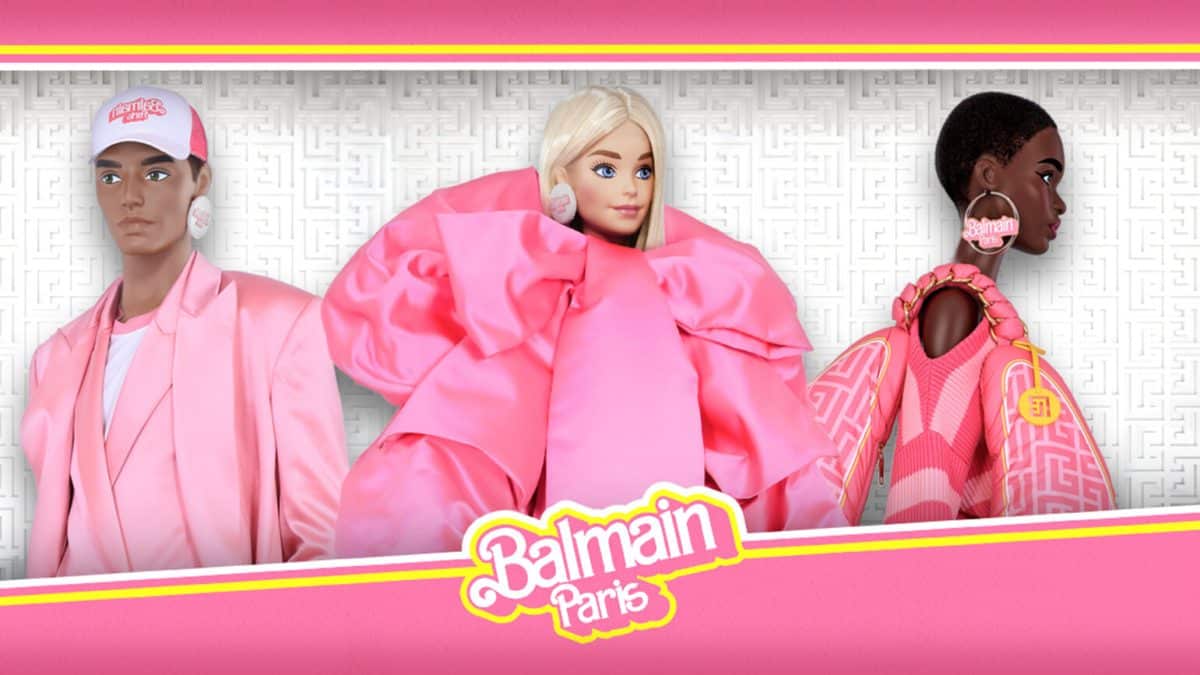
Balmain
You know NFTs are here to stay when brands such as Balmain join the trend. The luxury fashion house debuted its first 1:1 NFTs in a surprising collaboration with Barbie in January 2022. Their Web3 journey continued with a non-fungible thread NFT project via MINTNFT.
Their latest innovation was to launch an exclusive NFT membership club for the 2022 fall/winter Paris Fashion Week.
Givenchy
As one of the leading French luxury fashion brands, Givenchy was among the first to join the trend during the NFT boom during the 2021 summer. Their very first collectible celebrated Pride Month, and the team would soon launch their debut collection, too: a charity NFT collection with Chito.
Throughout 2022, Givenchy Parfums dropped another celebratory NFT collection for Pride Month and a collaboration with (b).STROY.
Jimmy Choo
Although Jimmy Choo didn’t launch as many NFTs as other luxury brands, its digital shoe drop is memorable. Back in October 2021, the high-end brand released its first NFT collection via Binance Marketplace. The drop consisted of 8,888 mystery boxes, including luxury virtual shoes and an NFT sneaker auction.
Considering this promising debut, fans hope that Jimmy Choo will return to the Web3 market soon.
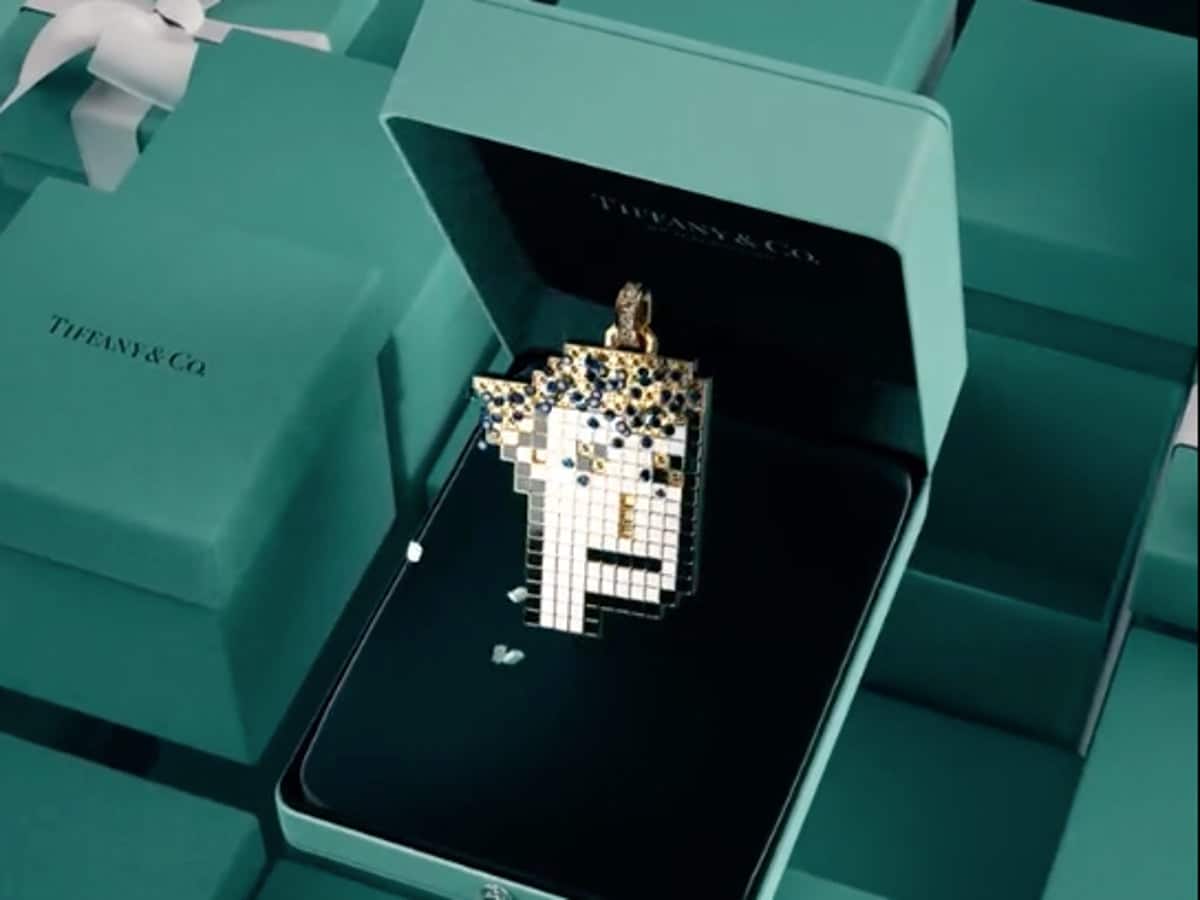
Tiffany & Co
The leading luxury jewelry brand Tiffany & Co entered the NFT scene by buying Tom Sachs’ Rocket Factory NFT “Okapi” for 115 ETH in 2021. Almost one year later, the brand absolutely smashed the market with “NFTiff,” a collection dedicated to CryptoPunks holders only. Basically, each CryptoPunk holder could claim a pendant made of diamonds and gemstones for 30 ETH per piece.
This unique drop sold out in 20 minutes, raising a total of $12.5 million.
Salvatore Ferragamo
Ferragamo is among the most luxurious Italian fashion brands, so fans were thrilled when their debut NFTs dropped in the summer of 2022. Surprisingly, the brand actually offered NFTs to the first customers of their (then) new physical store in Soho, NY. Visitors could use an innovative NFT booth where customers could customize and mint unique NFTs – all costs covered by Salvatore Ferragamo!
In fact, this was the first time a luxury fashion brand used a customizable NFT feature to reward its clients.
Karl Lagerfeld
This is perhaps the most significant NFT debut for a luxury brand as it celebrated the late Karl Lagerfeld’s birthday. In September 2021, holders could mint one of the 777 digital avatars representing a 3D version of Lagerfeld himself.
The collection sold out in less than 50 minutes – one of the most successful drops from any high-end fashion brand IRL!
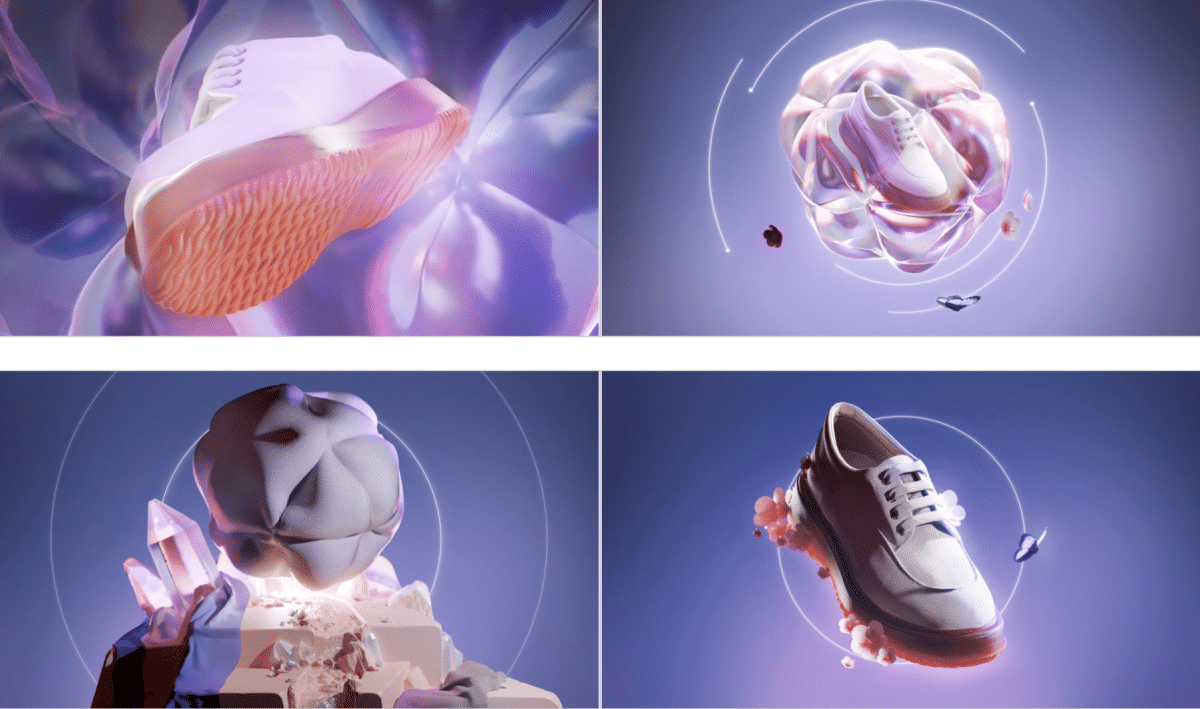
Web3 Luxury Brands
The Web3 world has welcomed the most luxurious real-life brands with open arms. Simultaneously, the Metaverse also gave birth to successful Web3-first luxury fashion projects. Here are the most popular ones at the moment:
House of 9dcc by Gmoney
Back in August 2022, the NFT investor Gmoney launched 9dcc – a crypto luxury lifestyle and fashion brand. Inspired by Gmoney’s trendy tastes, the platform offers exclusive digital products, merch, and exclusive experiences.
In terms of fashion, 9dcc collaborated with SnowFro for Art Week Miami, launched two successful drops all while growing its community.
Exclusible
From real estate to wine, fashion, and restaurants, Exclusible promotes luxury in all forms. Investor Pierre Guigourese founded the company in 2021 with its grand debut at NFT Paris. Their private islands and real estate in The Sandbox had massive success with buyers such as Sara Sampaio, ETORO, and Dan Holzmann.
Last spring, Exclusible partnered with AMEDEO to launch a NFT collection of luxury cameos that combine traditional Italian design and Metaverse utility. In March 2022, the company also released luxury wearables with Hogan, a high-end Italian brand, at Decentraland’s Fashion Week.
The Fabricant
When The Fabricant launched in 2018, it brought something unique to the luxury NFT fashion niche: allowing users to co-create digital apparel. Basically, anybody can have access to The Farbicant Studio where they can design wearables with top 3D artists or brands – and split the revenue!
Of course, this innovative vision skyrocketed the brand to popularity. Last year, The Fabricant launched the biggest digital fashion NFT collection with World of Women.
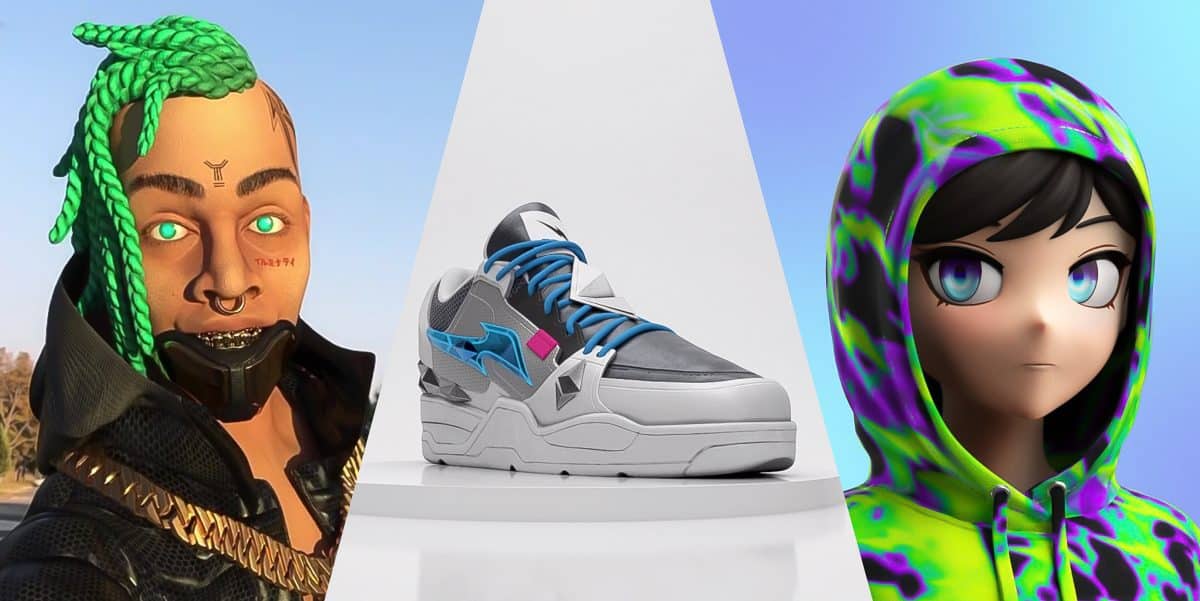
RTFKT
This is undoubtedly one of the most successful Web3 fashion projects to date. Founded in 2020, RTFKT became widely popular thanks to its CloneX NFT collection. The platform scored collaborations with iconic artists and designers, including Takashi Murakami. By 2023, their most expensive NFT sold for 450 ETH, or about $1.3 million.
This roaring success couldn’t have gone unnoticed. As a result, Nike purchased RTFKT back in December 2021.
STEKKEL – bags by Zoë Stekkel
Zoë Stekkel has over 15 years of experience working for brands such as H&M and Hudson’s Bay. The creative designer has spent the past few years bringing technology into her bag designs. From secret pockets to videos and NFTs displayed on the front of the bags, these revolutionary products bring NFTs to the real world and vice versa.
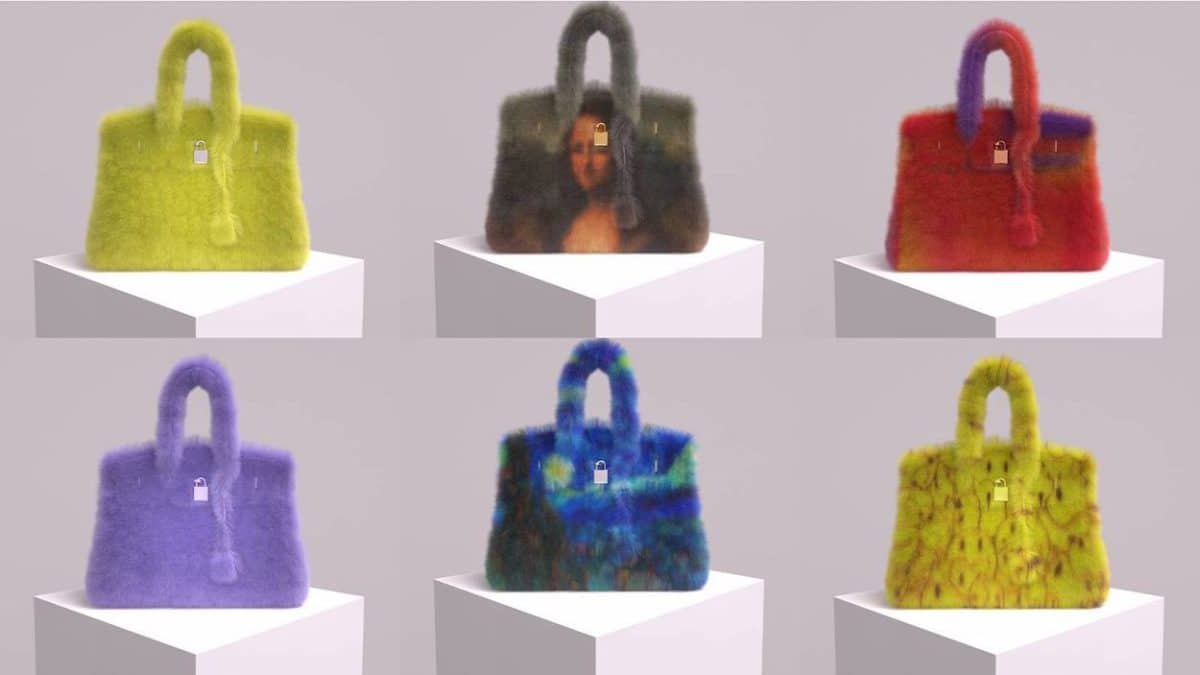
Can You Make NFTs Using IPs of Existing Brands?
This is a key question every content creator should ask before creating an NFT based on existing fashion brands. Why?
Here’s a quick example: earlier this year, the artist Mason Rothschild launched a collection of NFT bags called MetaBirkins. As the name suggests, these digital bags resembled Hermès’ iconic Birkin bag design.
The collection was a hit, but Rothschild didn’t have legal rights to use the Birkin trademark. The result? Hermès filed a lawsuit against him (which they won) and received $133,000 in damages. Bottom line, you should definitely do your research before using another brand’s design, names, or other details.
With that said, some projects and brands relinquish all of their IP (Intellectual Property Rights) so that NFT holders can do whatever they want with their NFTs. This term is called Creative Commons Zero, or cc0, and projects such as Goblintown, Mfers, and Loot have already adopted the trend.
In summary, if you own a cc0 NFT, you can use it in any way you want (including to create new digital artworks). Otherwise, checking the brand’s copyright policy or contacting it directly is best to avoid misunderstandings.
Your Takeaway
Luxury fashion brands joined the NFT market after the 2021 boom. Some launched blockchain games, while others dropped phygital collectibles – all sharing the same success. As people’s interest in fashion NFTs grew, so have digital-only apparel projects. Some of them gained worldwide recognition, scoring collaborations with iconic real-life brands.
Bottom line, one thing is certain: the fashion NFT niche is here to stay – and this is just the beginning.
![]()
All investment/financial opinions expressed by NFTevening.com are not recommendations.
This article is educational material.
As always, make your own research prior to making any kind of investment.
